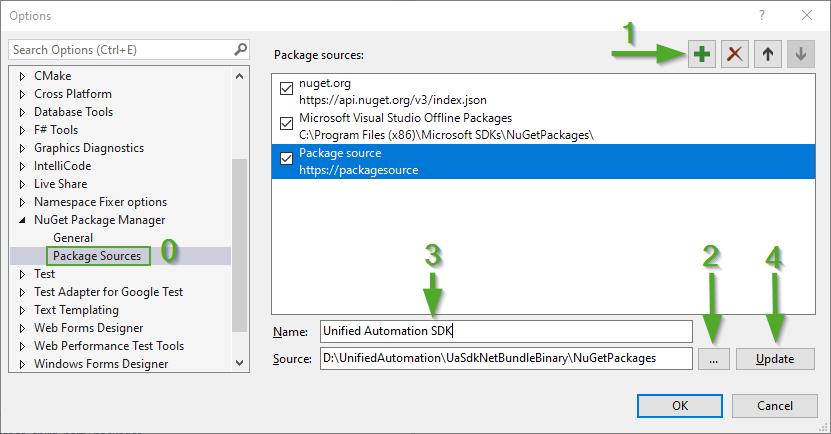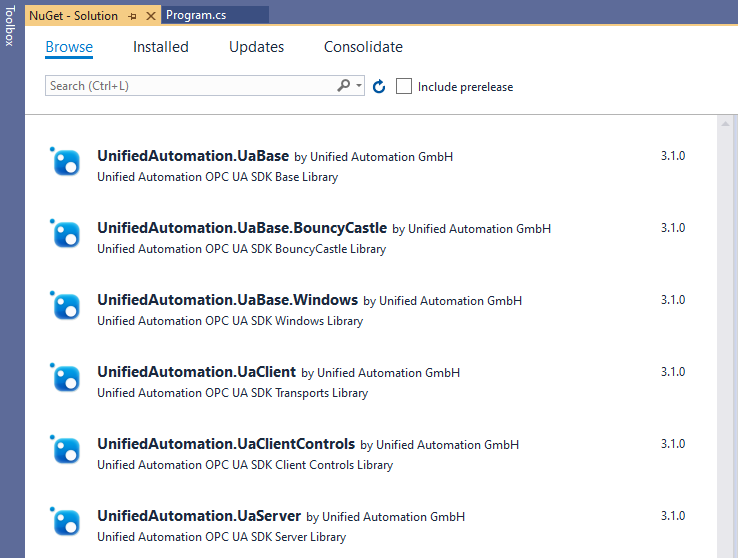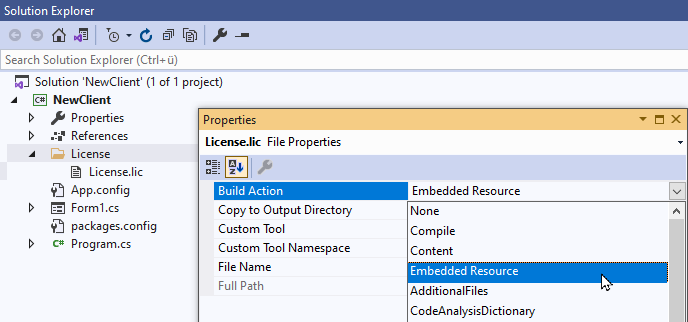 |
.NET Based OPC UA Client/Server SDK
3.1.3.516
|
 |
.NET Based OPC UA Client/Server SDK
3.1.3.516
|
Create a new C# project of typ Windows Form App (.NET Framework) with the target framework .NET Framework 4.5.

We start our UA-Client aka Form1 at another position. Therefore, delete the marked line from the file Program.cs.
To setup the OPC UA .Net SDK Nuget Package Repository
D:\UnifiedAutomation\UaSdkNetBundleBinary\NuGetPackages by default.
To install Nuget packages in your project


UaBase at the end of the using-block in Program.cs.At first add a new folder in your solution named License.

Normaly you would use your purchased license file, but for evaluation and for this example you can take the license from our code samples located by default in D:\UnifiedAutomation\UaSdkNetBundleBinary\src\examples\UaBasicClient\License.
To see the license file set the filter to All Files (*.*), select the license file and confirm with clicking the button Add.
The license file will be copied to your project's license folder.

To finish the task you have to set the BuildAction of the license file to Embedded Resource.

To use the license, you must add it to the LicenseManager. Therefore, add the following code in main() in Program.cs.
To configure your client you have to provide a configuration file. Add an App.config file from an example project to your project. Same procedure as with the license file above. You can take it e.g. from D:\UnifiedAutomation\UaSdkNetBundleBinary\examples\BasicClient.
For more information on configuration settings, see the Base Library documentation at Configuration Schema.
Finally, you must set the BuildAction of the file to None.
To finish this example and make your client start, add the following method to Program.cs, where Form1 is the automatically created form when creating the new project.
Now add the following code to the main method whicht calls to start ApplicationInstance